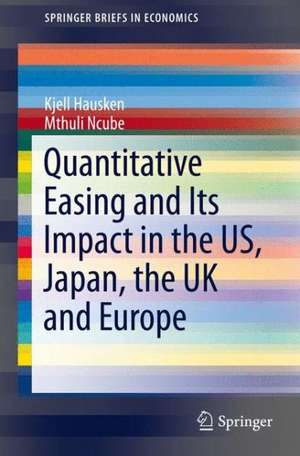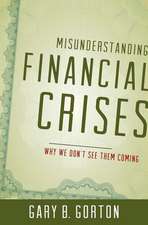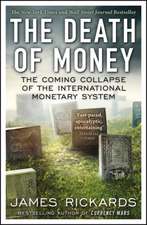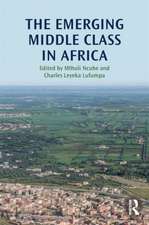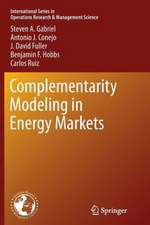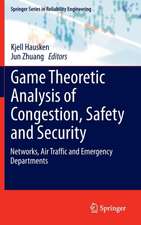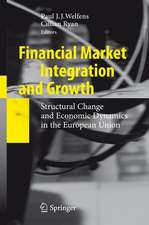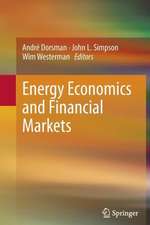Quantitative Easing and Its Impact in the US, Japan, the UK and Europe: SpringerBriefs in Economics
Autor Kjell Hausken, Mthuli Ncubeen Limba Engleză Paperback – 6 dec 2013
Din seria SpringerBriefs in Economics
-
 Preț: 444.35 lei
Preț: 444.35 lei -
 Preț: 264.79 lei
Preț: 264.79 lei - 15%
 Preț: 462.51 lei
Preț: 462.51 lei -
 Preț: 47.33 lei
Preț: 47.33 lei -
 Preț: 353.14 lei
Preț: 353.14 lei -
 Preț: 273.32 lei
Preț: 273.32 lei -
 Preț: 376.04 lei
Preț: 376.04 lei -
 Preț: 379.09 lei
Preț: 379.09 lei -
 Preț: 380.07 lei
Preț: 380.07 lei -
 Preț: 377.35 lei
Preț: 377.35 lei -
 Preț: 379.09 lei
Preț: 379.09 lei -
 Preț: 376.59 lei
Preț: 376.59 lei -
 Preț: 408.27 lei
Preț: 408.27 lei -
 Preț: 379.09 lei
Preț: 379.09 lei -
 Preț: 383.27 lei
Preț: 383.27 lei -
 Preț: 378.54 lei
Preț: 378.54 lei -
 Preț: 377.95 lei
Preț: 377.95 lei -
 Preț: 340.23 lei
Preț: 340.23 lei -
 Preț: 380.25 lei
Preț: 380.25 lei -
 Preț: 378.12 lei
Preț: 378.12 lei -
 Preț: 376.04 lei
Preț: 376.04 lei -
 Preț: 376.04 lei
Preț: 376.04 lei -
 Preț: 379.68 lei
Preț: 379.68 lei -
 Preț: 381.00 lei
Preț: 381.00 lei -
 Preț: 375.23 lei
Preț: 375.23 lei -
 Preț: 376.80 lei
Preț: 376.80 lei -
 Preț: 378.54 lei
Preț: 378.54 lei -
 Preț: 377.57 lei
Preț: 377.57 lei -
 Preț: 376.04 lei
Preț: 376.04 lei -
 Preț: 378.92 lei
Preț: 378.92 lei -
 Preț: 375.62 lei
Preț: 375.62 lei -
 Preț: 379.09 lei
Preț: 379.09 lei -
 Preț: 353.67 lei
Preț: 353.67 lei -
 Preț: 342.14 lei
Preț: 342.14 lei -
 Preț: 375.45 lei
Preț: 375.45 lei -
 Preț: 379.09 lei
Preț: 379.09 lei -
 Preț: 377.35 lei
Preț: 377.35 lei -
 Preț: 344.86 lei
Preț: 344.86 lei -
 Preț: 377.35 lei
Preț: 377.35 lei -
 Preț: 345.89 lei
Preț: 345.89 lei -
 Preț: 377.57 lei
Preț: 377.57 lei -
 Preț: 343.83 lei
Preț: 343.83 lei -
 Preț: 378.12 lei
Preț: 378.12 lei -
 Preț: 345.06 lei
Preț: 345.06 lei -
 Preț: 379.48 lei
Preț: 379.48 lei -
 Preț: 379.48 lei
Preț: 379.48 lei -
 Preț: 380.07 lei
Preț: 380.07 lei -
 Preț: 375.45 lei
Preț: 375.45 lei -
 Preț: 378.54 lei
Preț: 378.54 lei
Preț: 445.33 lei
Nou
Puncte Express: 668
Preț estimativ în valută:
85.21€ • 89.21$ • 70.51£
85.21€ • 89.21$ • 70.51£
Carte tipărită la comandă
Livrare economică 05-19 aprilie
Preluare comenzi: 021 569.72.76
Specificații
ISBN-13: 9781461496458
ISBN-10: 1461496454
Pagini: 136
Ilustrații: X, 123 p. 24 illus., 8 illus. in color.
Dimensiuni: 155 x 235 x 7 mm
Greutate: 0.2 kg
Ediția:2013
Editura: Springer
Colecția Springer
Seria SpringerBriefs in Economics
Locul publicării:New York, NY, United States
ISBN-10: 1461496454
Pagini: 136
Ilustrații: X, 123 p. 24 illus., 8 illus. in color.
Dimensiuni: 155 x 235 x 7 mm
Greutate: 0.2 kg
Ediția:2013
Editura: Springer
Colecția Springer
Seria SpringerBriefs in Economics
Locul publicării:New York, NY, United States
Public țintă
ResearchCuprins
1 Introduction.- 2 Transmission Channels for Quantitative Easing and Effects on Interest Rates.- 3 The Central Bank Loss Function and Quantitative Easing as a Stackelberg Game.- 4 The Effect of Quantitative Easing on Interest Rates.- 5 Broader Economic Effects on Quantitative Easing.- 6 Conclusion.
Notă biografică
Kjell Hausken has been Professor of Economics and Societal Safety at the University of Stavanger, Norway since 1999. His research fields are strategic interaction, risk analysis, public choice, conflict, game theory, terrorism, information security, economic risk management. He holds a PhD from the University of Chicago (1990–1994), was a Postdoc at the Max Planck Institute (Cologne) 1995–1998, and a Visiting Scholar at Yale University 1989–1990. He has published 180 articles, is on the Editorial Board for Reliability Engineering & System safety, Theory and Decision, and Defence and Peace Economics, has refereed for 60 journals, and advises and has advised six PhD students.
Professor Mthuli Ncube is Chief Economist at the African Development Bank (AfDB), and holds a PhD in Mathematical Finance from Cambridge University, UK. He is responsible for economic research, strategic economic direction and thinking within the AfDB, based on the pillars of thought-leadership, knowledge generation, knowledge dissemination and knowledge transfer. Previously, he held the post of Dean of the Faculty of Commerce, Law and Management at the University of Witwatersrand, Johannesburg, South Africa, Director/Head of School and Professor of Finance at Wits Business School, and Lecturer in Finance at the London School of Economics. He has published widely in the area of finance and economics.
Professor Mthuli Ncube is Chief Economist at the African Development Bank (AfDB), and holds a PhD in Mathematical Finance from Cambridge University, UK. He is responsible for economic research, strategic economic direction and thinking within the AfDB, based on the pillars of thought-leadership, knowledge generation, knowledge dissemination and knowledge transfer. Previously, he held the post of Dean of the Faculty of Commerce, Law and Management at the University of Witwatersrand, Johannesburg, South Africa, Director/Head of School and Professor of Finance at Wits Business School, and Lecturer in Finance at the London School of Economics. He has published widely in the area of finance and economics.
Caracteristici
Analyses the impact of quantitative easing on interest rates and the economy of the US, Japan, UK and Europe Demonstrates that the Federal Reserve and Bank of England, focusing primarily on bond purchases, have been more effective in lowering interest rates than the Bank of Japan and the European Central Bank Uses large Bayesian vector autoregression (BVAR) models to analyze the impact of quantitative easing on the wider economy Includes supplementary material: sn.pub/extras
